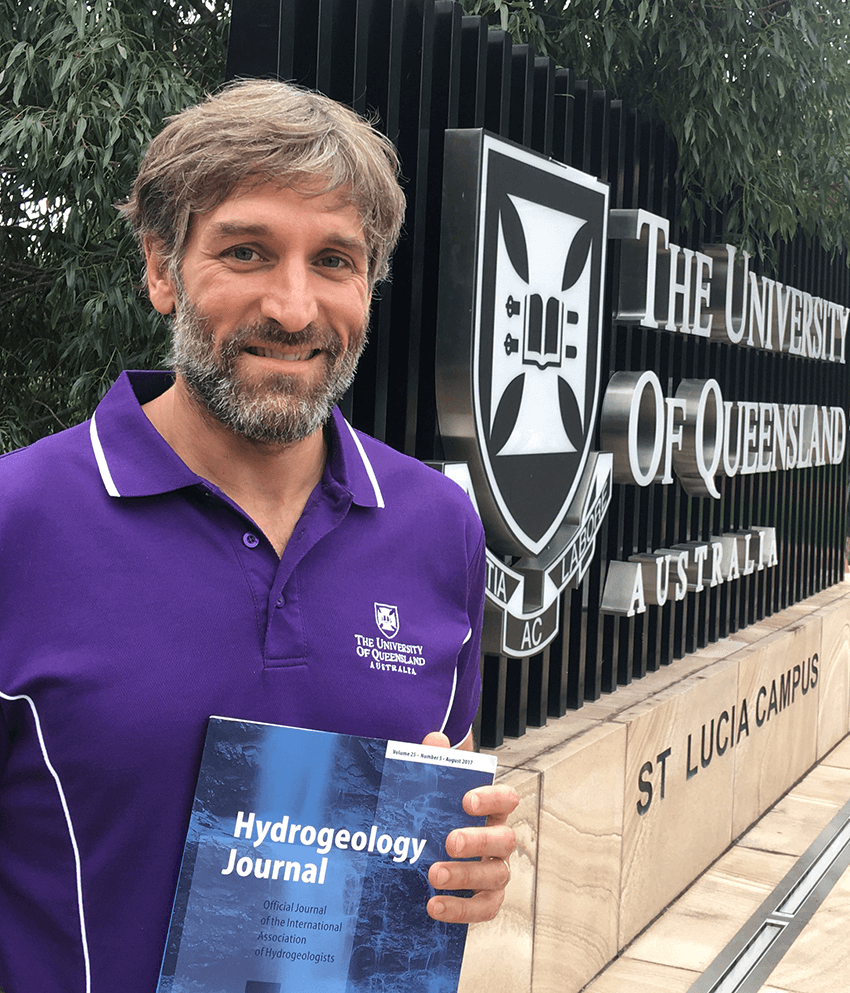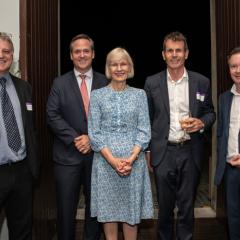Great Artesian Basins knowledge boosted by UQ: free access to full papers until 31 March

UQ researchers have led a project to deliver a compendium of the latest research and knowledge on the Great Artesian Basins. The project was a large-scale collaborative initiative, sourcing experts from across Australia to bring together the latest understanding of the vital Australian water resource.
The complex groundwater system spans across Queensland, New South Wales, South Australia and Northern Territory, covering one fifth of Australia, making its footprint larger than many countries. A large number of farmers, communities and industries rely on water from the GAB for their very survival, and the need for continued access to the GAB’s groundwater has intensified during ongoing prolonged periods of drought.
While there has been a large research effort into the GAB in recent years, much of the recent research has been documented in detailed technical reports to funding organisations, and is not readily available to interested professionals, including the scientific and broader community.
The important initiative brings the latest scientific knowledge on the GAB together for water managers, landholders and communities who depend on this valuable groundwater resource.
In a move to ensure the research gets straight into the hands of the right people, UQ teamed up with key publication, the Hydrogeology Journal, to publish the entire series in a special issue, which has just been released. All the articles have been through the journal’s independent, expert peer review process to provide a rigorous quality check of the latest research findings from all sources.
According to UQ water expert, Associate Professor Phil Hayes, the new resource will be an asset for people making decisions about how this important water resource can be best managed, and enhances understanding of how the aquifers and ecologically important features such as desert springs operate.
“There has been a longstanding potential management issue. Relying on simplistic ideas of the hydrogeology and connectivity of the GAB can give rise to incomplete or just a plain incorrect understanding of the system,” he says.
“Even its name is misleading, it should be a plural - Great Artesian Basins - as it is not one basin but several. At the most basic level, it would help to reset our thinking to stop talking about the GAB as one entity – as in reality it is a complex jigsaw of four semi-connected hydrogeological basins.
“What’s more, in many areas there is little evidence of connection between basins, so we should not expect changes in one location to necessarily spread to the other areas. The journal includes several examples that demonstrate that where we have more information we see more contrasting geology and hydrogeology. Other areas of the GAB where we currently don’t have a lot of data, may be similarly diverse.”
He says the two-year research project bought together the latest peer-reviewed science, which will facilitate better decision making when formulating regulatory controls, mitigating risks and determining industry best practice.
“With this compilation of the latest research we have made significant inroads into understanding and managing large groundwater systems,” says Associate Professor Hayes.
“It will also help landholders and other GAB groundwater users in the community have a better understanding of groundwater system and the information that is used in managing ongoing use of the resource.”
Ahead of the release, the initiative was officially launched in November at the key event for the hydrogeology community, the Australasian Groundwater Conference, by Chair of Australia’s Great Artesian Basin Coordinating Committee, Juanita Hamparsum.
Ms Hamparsum said it was pleasing to see such an active collaboration of Industry, government and research institutions partnering to bring together experts in the field to collate and disseminate tangible and scientifically rigorous advances in science and technology. She took the opportunity to urge that the research effort must continue.
This initiative is the result of an active collaboration between NERA (National Energy Resources Australia) and the UQ Centre for Natural Gas (with its industry members Arrow Energy, APLNG and Santos), who jointly funded the project. The project was led by the UQ Centre for Natural Gas and UQ’s Sustainable Minerals Institute through the Centre for Water in the Minerals Industry due to their broad water and geology expertise. The Centre bought in additional expertise in hydrology and groundwater management, contracting researcher, Dr Carlos Ordens, to lead the project.
MORE INFORMATION
- The project delivers general information on the GAB and updates information about hydrological processes and groundwater resource management. It improves the scientific understanding of the GAB’s hydrogeology and socio-hydrogeological connections, including water use and management, structure and geology, faults and springs.
- It also addresses perceived versus proved impacts from industries (e.g. gas, mining, agriculture) and climate change. Specific research programs and the knowledge gained during the intensive assessment prior to and during coal and gas extraction has greatly improved understanding in these areas.
- Ahead of the release of the hardcopy of the Hydrogeology Journal, UQ has created a portal profiling all the research, including links to the abstracts for each of the research papers.
- The study was led by researchers from the UQ Centre for Natural Gas Prof Jim Underschultz and Associate Prof Phil Hayes and from the Sustainable Minerals Institute’s Centre for Water in the Minerals Institute Dr Carlos Miraldo Ordens and Prof Neil McIntyre. Scientific contributions were made by a host of universities and research organisations, government agencies, and private companies.
The papers are freely accessible until 31 March 2020. Click here to access the abstracts and links to the full papers: https://natural-gas.centre.uq.edu.au/gab



